
Q. Can you give us a bit of your history, background, schooling & how you discovered your Animation calling? What are your film credits, Disney & Non-Disney?
I was born in Italy and immigrated to the US with my mother and father and two siblings. We lived in a town 30 miles outside of Boston called Milford. After high school, I went to art school in Boston called New England School of Art where I studied Fine Arts. After graduating from there, I went to the University of Massachusetts in Amherst for my BFA and majored in Sculpture.
After graduating, I worked as an elementary school art teacher for three years. I got married in 1977. While on our honeymoon, traveling cross-country during summer vacations, we stopped in L.A. On a whim, I parked our van across the street from the main gate of the Disney Studios in Burbank, and went into the guard gate with my portfolio and asked if I could get an interview. They asked me to have a seat, and 20 minutes later, I got an interview. I don’t remember the gentleman’s name, but he was very positive and told me if I ever decided to move to California to stop by and apply for the training program. Six months later, I resigned my teaching position and moved out to L.A. with my wife!
An acquaintance of my wife introduced me to Don Duckwall who introduced me to Eric Larsen at the studio. Eric hired me for the training program. I started the character animation training program under Eric Larsen on April 10, 1978. I had absolutely no idea how animation was produced but learned quickly. Unfortunately, layoffs are common in animation as I found out! After getting laid off, Don Duckwall got me in touch with Harry Love at Hanna-Barbera. I spent the next three years there as an assistant and eventually as a character animator. I freelanced on Heavy Metal the Movie while there.

From there, I worked with Ralph Bakshi and Frank Frazetta on Fire and Ice. Eventually returning to Disney for the Black Cauldron. I left Disney after that to work in live action, starting with Poltergeist II for Boss Films. I remained in live action for the next 8+ years before returning to Disney and the Lion King. While there, I traveled to the Florida studio to help train the efx crew there. I was also sent to the Paris studio to help train the efx department there as well. I’ve been head of efx on Hercules, Emperor’s New Groove and Rhapsody in Blue in Fantasia 2000!

My final film for Disney Feature Animation was Princess and the Frog. Since then, I’ve worked freelance on commercials and several independent films. I retired and have been teaching Animation at Otis College of Art and Design for the last seven years. In 2017, I started work as head of efx at Duncan Studio in Pasadena on the film Mary Poppins Returns, due out in December 2018.
I retired again after finishing that film and plan on concentrating on my personal art/sculpture now!
You can go on IMDb for my filmography! https://www.imdb.com/name/nm0546520/?ref_=nv_sr_1
Q. When you made it to Disney animation, did you have a mentor and who was that? What was the best advice/lesson you got from him/her?
When I got to Disney, I worked exclusively with Eric Larson as he was in charge of the training program. I sat in the training room which was on the second floor of the original Animation building on the Disney Studio main lot. Eric’s room was next door. The hallway was lined with 4×8 storyboards filled with Mel Shaw storyboards for The Black Cauldron hanging on the walls. Eric was available for questions and direction at any time. He was a patient and incredibly understanding teacher. I had no idea how animation worked and was ignorant of the process. All I knew was that I wanted to learn how to animate and I understood what an incredible opportunity was being afforded to me by one of the best animators around.
Eric explained the importance of staging, timing, and draftsmanship. How important it was that the character looked and acted like it was going through a thinking process. Eye contact between characters, the importance of arcs, and all the basic principles of animation. I learned a lot in the time I was with Eric and I really have to say I enjoyed every single minute of it!

After three months, I was laid off. Don Duckwall recommended me to Harry Love at Hanna-Barbara, so I started there as an assistant that following week. At Hanna-Barbara I stared under the tutelage of some seasoned animators, Voles Jones, Rudy Cataldi, Ed Barge, Hal Ambro, Margaret Nichols, Ed Aardal, Irv Spence, Charlie Downs, and Robert (Bob) Taylor. For three years, I worked side by side with these animators and many more, on TV Saturday morning cartoons and the feature Heidi’s Song. I owe them all so much, and I’ll always be grateful for their guidance and mentorship.
Bob Taylor gave me the chance to work on the feature Heidi’s Song and Charlie Downs, somewhat unintentionally, gave me the opportunity to animate the man mountain by breaking his wrists roller skating then recommending me to Bob for the job!
Q. How did you find yourself in EFX? Did you want to do EFX or did the studio see that you were best suited with the effects department?
I was having trouble with a scene I was working on that involved a tidal wave. Bob Taylor told me to go see Ed Aardal. Ed spent four hours on how to animate the wave, the physics behind it and the design aspects. He helped me with a few other effects scenes, after that, and really inspired my interest in animating effects. I started doing more and more effects for other animators who found out I was good with effects.
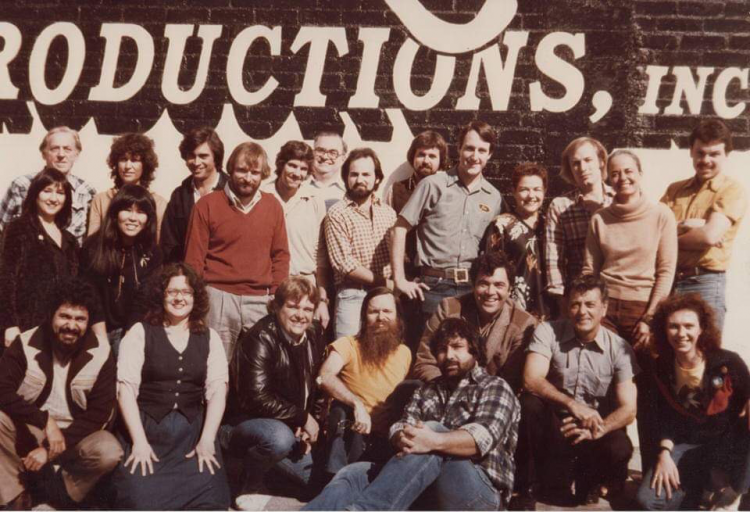
I continued animating characters while working on Bakshi’s Fire and Ice until the last two weeks on the film when I had to animate a lot of the big lava scenes in the destruction of the villain Nekron’s mountain lair. I returned to Disney as an Effects animator and worked with Dave Michener for a project he was working on for Tokyo Disneyland called Meet the World. I worked closely with Patty Peraza for about a year and then went onto the Black Cauldron as an assistant character animator working with my old pal Charlie Downs as his assistant. After that film, I left Disney and went to work for the effects house Boss Film Corp. Terry Windell and Garry Waller contacted me to ask if I wanted to work on the traditional effects for Poltergeist II.
That started a run of live action effects films that I would work on for the next 8 and 1/2 years for Boss and some other live action effects houses in Los Angeles before returning to Disney in 1993.

Q. Can you tell me the difference in the artist’s personality or skills that differentiate the character animator & the effects animator?
I can only speak for myself in terms of personality differences. Efx animators tend to be more introspective and less demonstrative as I think character animators seem to be. Character animators often reflect the personality of the characters they animate.
As an efx animator, I tend to have a more reserved approach to my animation. I’m more concerned with the physics and the designs and less with the notoriety that often comes with character animation, not to say that efx animators avoid it. We like recognition for our work just as much as the character folks do. Our tasks are more on the peripheral of the visuals of a film but carry no less important than the characters or the layouts or backgrounds! The marriage of all the parts is what makes the visuals and the story work. In my opinion, all the parts must work in collaboration for the film to be successful!
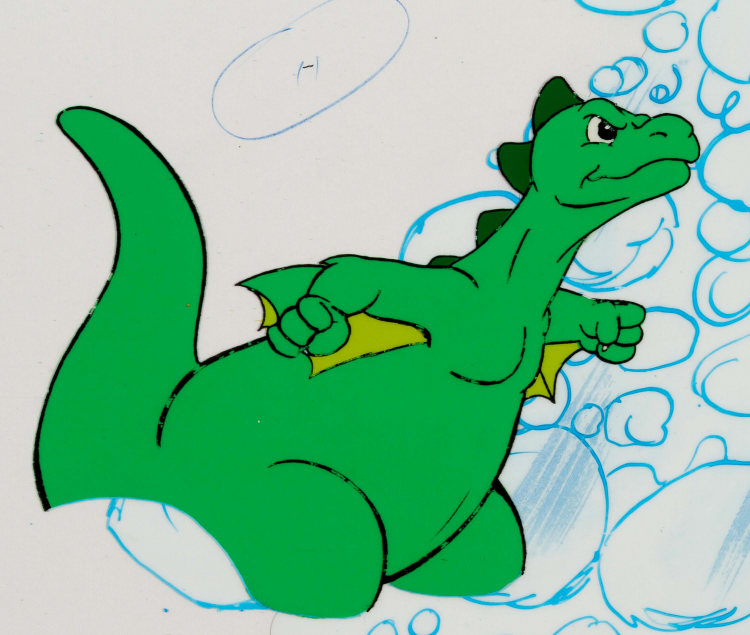
Q.What was your first scene as a professional effects animator? On a personal level, which element is hardest to animate water, fire, wind, or other?
I had to animate a rush or wave of water down a canyon. Very simple effect, but my first successful effect was animating water shaking off of the character Godzooky in the Hanna-Barbara TV series Godzilla! For me, I have the most problem animating fire I guess! I really enjoy animating it, but I think I just put more thought into designing and getting the timing right when animating fire!
Q. What was the most challenging scene of your career? What was your favorite?
I don’t really have a favorite scene. One of my most challenging assignments was animating lightning at 60 frames per second for a showscan film we did while at Boss Film. It was tricky getting the timing just right! I have a lot of fun scenes that I did. One of them is a scene in Lion King during the Be Prepared song sequence. As Scar slinks toward the camera, there’s an upheaval of the ground, explosions with smoke and fire. Scar is raised, up and off screen, along with a few hyenas. I worked with the character animator, Doug Frankel, for about three months going back and forth coordinating our tasks. Very fun process!

Q. As the head of EFX on “Hercules”, can you go over the challenges given to you now that were not part of your day to day on the film, as opposed to just supervising animators on a film?
As the head of efx on Hercules, my biggest challenge was coordinating between 3 studios. I was in Burbank with the main crew. We had the Disney, Florida crew helping out as well as the crew in Disney, Paris, France. In all, we had a total of 105 efx animators working on the film! We communicated by satellite conference at least once a week. Assigning scenes to animators and viewing pencil tests for approval before showing them to the directors. Coordinating continuity and hook ups between the 3 studio crews was sometimes an overwhelming task but was made manageable by our Assistant Production Managers chief among them Kim Gray. Kim was a great organizer and helped me immensely in the production. Making sure the efx designs remained consistent throughout the production was a constant concern! Nothing would have gone as smoothly as it did without the great talent and cooperation of the terrific animators we had on the crew, from three separate studio locations, separated by thousands of miles, but united in their dedication to producing the best efx animation possible.
As a supervising animator, you are tasked with overseeing only a sequence or a series of scenes or a particular effect only. It’s a much smaller responsibility but no less important!
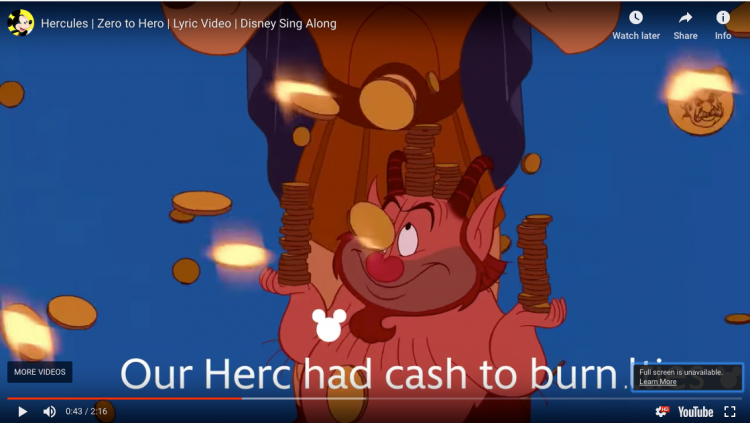
Q. Now that you’re retired, can you spill the beans…Effects animation is often accused of slipping in a hidden messages such as the word SEX in The Lion King? Is any of this true? Did you ever put in any Easter eggs?
To my knowledge, there were never any intentional “secret” messages that I’m aware of! One of my animators did draw a caricature of me and placed it on a coin in the Zero To Hero sequence which I didn’t know about until I saw it in a color model test. It’s still in the movie. Things like that are common, but I’ve never been aware of any nasty messages.
In the scene I talked about earlier from The Lion King, when I was pencil testing the scene, one of my associates viewing it with me said, “you got everything in there but the kitchen sink!” so, I animated a kitchen sink in the midst of all the other debris in the background.
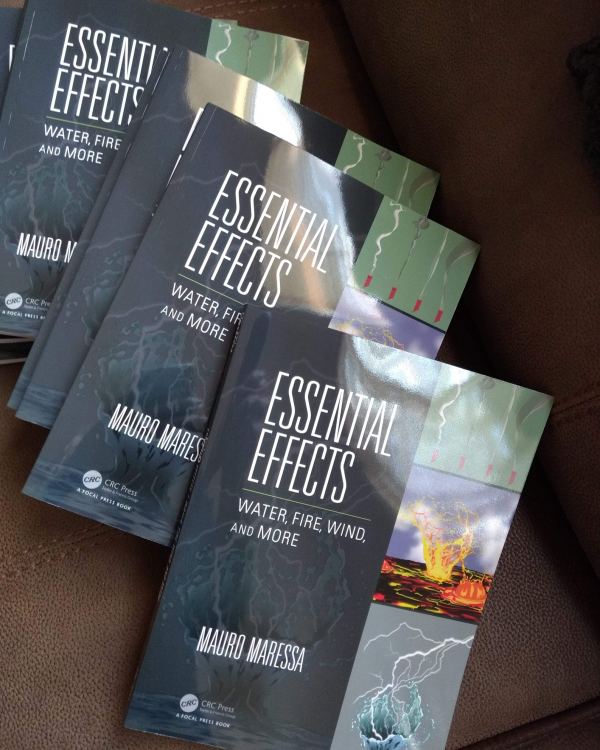
Q. You have written a wonderful new EFX book, “Essential Effects: Water, Fire, Wind & More”. Can you give us a little bit about the making of the book & what the book offers to the inspiring artist?
The book took me about 2 years to finish. I wanted to cover as many efx problems as I could. My reason for writing the book stems from my respect for the men and women that first guided me into this business! The unselfish manner in which they shared their knowledge for the craft, which many of them helped to raise to such a great height, during the 1930s thru to the 1960s and beyond. They helped to train my generation of animators coming into it during the 1970s and create the resurgence of traditional animation in the late ‘80s and ‘90s to the present day.
Anyone wishing to purchase my book can go to:
https://www.amazon.com/Essential-Effects-Water-Fire-Wind/dp/1138101079
Or:
https://www.crcpress.com/Essential-Effects-Water-Fire-Wind-and-More/Maressa/p/book/9781138101074
My generation and I owe them so much! It is hard to say that the Animation Renaissance of the 80’s would have occurred had it not been for the passion and teachings that they passed along and instilled in us. I wrote the book in the hopes that I could pass along some of the traditions and knowledge that those men and women passed down to me so many years ago, a passing of the “baton” if you will. In the hopes that it may help the next generation of animators.

The book is meant to cover the basics and help to build a foundation for efx animators whether traditional hand-drawn or digital animation. The fundamentals will always be the same. The way I approach a problem is just one way. The idea is to share information with other artists and let the individual form his or her own style and methods of dealing with those problems. What the individual does with them is up to their own creativity and passion that they bring to the craft!
A lot of the same ways I approach my teaching methods in the classroom at Otis College of Art and Design where I’ve been teaching Animation Basics and Effects Animation for the last 7 years now. It’s great to see the interest in traditional animation from a new generation of hopeful animators.
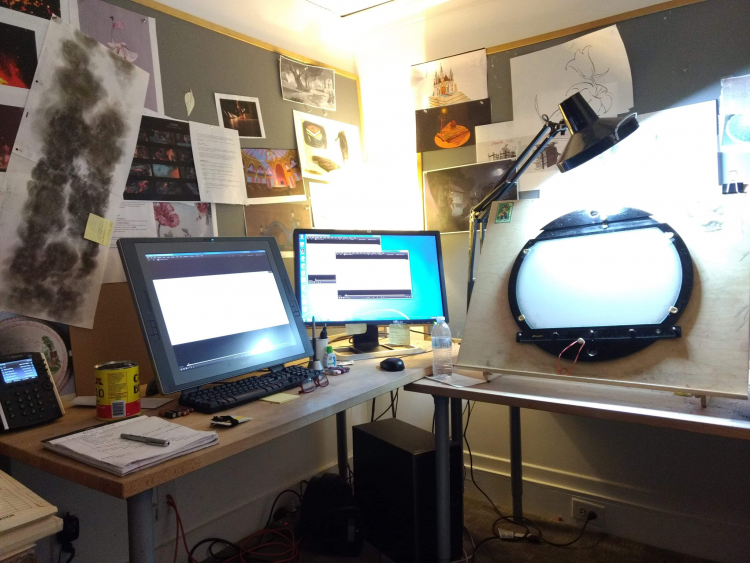
What do you love about special effects animation?
What do I love about special effects animation? Everything! The design aspects, the freedom of creating a natural phenomenon, the complexity of the physics of the efx! What’s not to like?
When I get a scene with an effect, I don’t look at it as a how hard or simple a piece of animation it might be. To me, it’s a design problem in action that needs to be solved. I like to make it into a challenge for myself.
Thinking it out in three dimensions from all angles rather than just the two dimensions on the paper I’m drawing on. Even if I don’t need to show those aspects on the animation, it helps me to define the efx in my mind’s eye and hopefully produce a better piece of animation! Hard to explain but for over 40 years this has been a truly fun ride for me. Thanks for the

https://www.amazon.com/Essential-Effects-Water-Fire-Wind/dp/1138101079
https://www.crcpress.com/Essential-Effects-Water-Fire-Wind-and-More/Maressa/p/book/9781138101074

No Comment